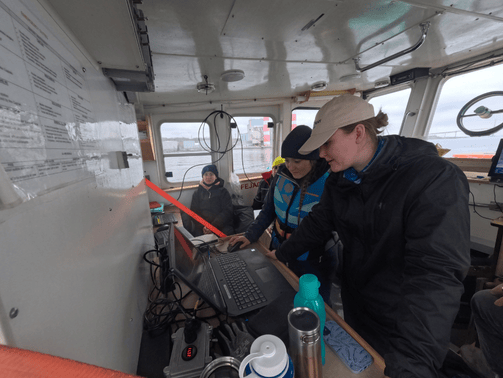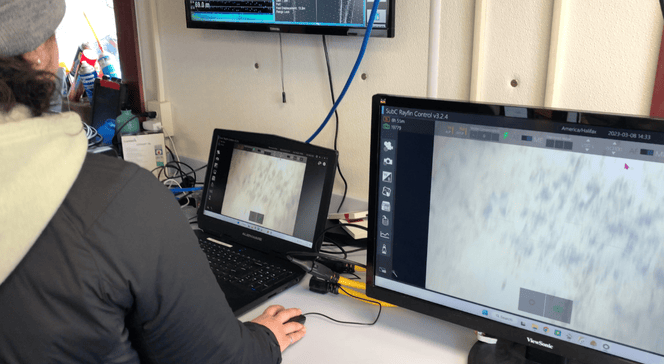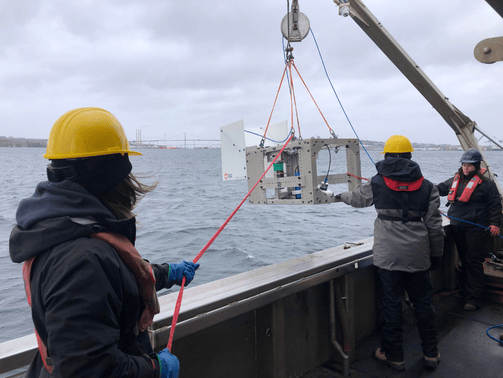SubC Imaging Helps Train Ocean Technology Students in Nova Scotia
At SubC Imaging, we know that technology alone isn’t enough to advance subsea research and inspection. It takes skilled people to operate it. That’s why SubC supports the Oceans Technology Graduate Certificate (OTEC) program at the Nova Scotia Community College (NSCC) Ivany campus with access to our advanced subsea imaging systems. Here, students are training to become the next generation of professionals in the fast-growing ocean technology sector.
Olivia Chapman, Katryn Crawford, Maddie Varey, NSCC Oceans Technology students operating the SubC drop camera
Building a Strong Foundation in Ocean Technology Training
The OTEC curriculum spans oceanography, navigation and positioning, marine safety, underwater robotics, acoustics, and imaging. The one-year graduate program combines classroom learning with intensive fieldwork, giving students the knowledge and confidence to operate advanced systems. Alongside coursework, students complete practical exercises such as deploying moorings and acoustic receivers in Halifax Harbour, conducting beach erosion studies with drones, and building baited remote underwater video systems (BRUVS).
Offshore Field Camp: Hands-On Subsea Imaging and Camera Systems
NSCC student operating the SubC drop camera
One of the highlights comes each March, when students board a larger research vessel for a week-long offshore field camp. Working as a team, they prepare, deploy, and recover a variety of ocean systems, from autonomous vehicles to moorings and imaging platforms.
For the past three years, SubC Imaging has supported this field training by providing a Rayfin underwater camera system equipped with LED lights and MantaRay lasers. Students learn how to rapidly configure the system, integrate it onto a drop frame, and operate it at sea. During deployments, the camera is lowered to within a metre of the seabed to capture benthic habitat videos along transects, most recently in the Narrows, the body of water connecting Halifax Harbour to the Bedford Basin in March 2025.
“Getting the students working with industry-standard technology like the SubC Rayfin makes all the difference,” says Stéphane Kirchhoff, OTEC program instructor. “They aren’t just reading about underwater imaging, they’re learning to integrate lights, lasers, and cameras, manage electro-mechanical tethers, and troubleshoot in real time.”
Bridging Classroom Learning with Real Offshore Experience
Julia Clarke and Oceans Technology classmates deploying drop camera system
During the expedition, students rotate between roles, from managing winches and tethers on deck to monitoring live video feeds in the control center. This mirrors the teamwork required in real offshore operations, ensuring they graduate with a strong sense of both technical skill and operational collaboration.
“Nothing beats a visual of the seafloor,” adds Alfred White, OTEC program instructor. “Seeing benthic habitats on-screen connects everything they’ve studied in the classroom. It brings the theory to life and gives them confidence that they can handle these systems in their future careers.”
Preparing Students for Careers in Ocean Technology
By working with SubC Imaging technology, OTEC graduates gain practical experience with the same equipment trusted by operators and researchers worldwide. This exposure strengthens their skills and prepares them to contribute immediately to the offshore energy, marine science, and defense industries.
For SubC Imaging, supporting OTEC is about more than lending equipment. It’s about helping to train the next generation of ocean professionals who will shape the future of subsea exploration and monitoring.
To see the experience in action, this short video filmed by a student in the Oceans Technology program shows moments from the offshore field camp using SubC’s Rayfin underwater camera system.



